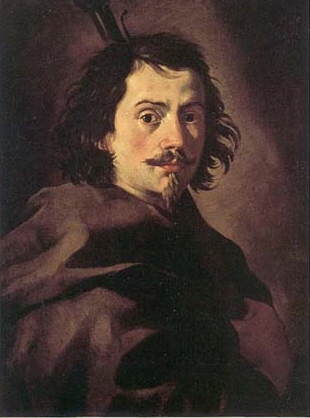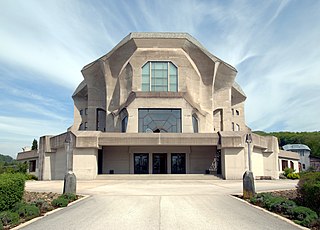
Francesco Borromini, byname of Francesco Castelli, was an Italian architect born in the modern Swiss canton of Ticino who, with his contemporaries Gian Lorenzo Bernini and Pietro da Cortona, was a leading figure in the emergence of Roman Baroque architecture.

The École Polytechnique Fédérale de Lausanne (EPFL) is a public research university in Lausanne, Switzerland. Founded in 1969 with the mission to "train talented engineers in Switzerland", it is inspired by the École Centrale Paris.

Moritz Leuenberger is a Swiss politician and lawyer who served as a Member of the Swiss Federal Council from 1995 to 2010. A member of the Social Democratic Party (SP/PS), he was President of the Swiss Confederation in 2001 and 2006. Leuenberger headed the Federal Department of Environment, Transport, Energy and Communications for the whole of his tenure as a Federal Councillor.

The International Style is a major architectural style and movement that began in western Europe in the 1920s and dominated modern architecture until the 1970s. It is defined by strict adherence to functional and utilitarian designs and construction methods, typically expressed through minimalism. The style is characterized by modular and rectilinear forms, flat surfaces devoid of ornamentation and decoration, open and airy interiors that blend with the exterior, and the use of glass, steel, and concrete.

Switzerland lies at the crossroads of several major European cultures. Three of the continent's major languages, German, French and Italian, are national languages of Switzerland, along with Romansh, spoken by a small minority. Therefore, Swiss culture is characterized by diversity, which is reflected in a wide range of traditional customs. The 26 cantons also account for the large cultural diversity.

Herzog & de Meuron Basel Ltd. is a Swiss architecture firm headquartered in Basel (Switzerland), founded by Jacques Herzog and Pierre de Meuron.
The International Union of Architects is the only international non-governmental organization that represents the world's architects, now estimated to number some 3.2 million in all.
Building design, also called architectural design, refers to the broadly based architectural, engineering and technical applications to the design of buildings. All building projects require the services of a building designer, typically a licensed architect. Smaller, less complicated projects often do not require a licensed professional, and the design of such projects is often undertaken by building designers, draftspersons, interior designers, or contractors. Larger, more complex building projects require the services of many professionals trained in specialist disciplines, usually coordinated by an architect.

Peter Zumthor is a Swiss architect whose work is frequently described as uncompromising and minimalist. Though managing a relatively small firm, he is the winner of the 2009 Pritzker Prize and 2013 RIBA Royal Gold Medal.

The Goetheanum, located in Dornach, in the canton of Solothurn, Switzerland, is the world center for the anthroposophical movement.

Contemporary architecture is the architecture of the 21st century. No single style is dominant. Contemporary architects work in several different styles, from postmodernism, high-tech architecture and new references and interpretations of traditional architecture to highly conceptual forms and designs, resembling sculpture on an enormous scale. Some of these styles and approaches make use of very advanced technology and modern building materials, such as tube structures which allow construction of buildings that are taller, lighter and stronger than those in the 20th century, while others prioritize the use of natural and ecological materials like stone, wood and lime. One technology that is common to all forms of contemporary architecture is the use of new techniques of computer-aided design, which allow buildings to be designed and modeled on computers in three dimensions, and constructed with more precision and speed.

Swiss chalet style is an architectural style of Late Historicism, originally inspired by rural chalets in Switzerland and the Alpine (mountainous) regions of Central Europe. The style refers to traditional building designs characterised by widely projecting roofs and facades richly decorated with wooden balconies and carved ornaments. It spread over Germany, Austria-Hungary, Italy, France and Scandinavia during the Belle Époque era.
The architecture of Iceland draws from Scandinavian influences and traditionally was influenced by the lack of native trees on the island. As a result, grass- and turf-covered houses were developed. Later on, the Swiss chalet style became a prevailing influence in Icelandic architecture as many timber buildings were constructed in this way. Stone and later concrete were popular building materials, the latter especially with the arrival of functionalism in the country. Contemporary architecture in Iceland is influenced by many sources, with styles varying greatly around the country.

Founded in 1854, the Department of Architecture (D-ARCH) at ETH Zurich in Switzerland is an architecture school in Zürich, providing education in the fields of architecture, landscape architecture, urban planning, and urban design. It has around 1,900 students, 350 staff members, and an annual budget of CHF 40 million.

The Institut National des Sciences Appliquées de Strasbourg or INSA Strasbourg is a Grande École d'Ingénieurs with selective admission criteria. INSA Strasbourg is one of the 210 French Engineering School entitled to deliver the "Diplôme d’ingénieur". It is currently under the authority of the French Ministry of Education and Research and part of INSA's network, the leading French group of engineering institutes.

Verena Loewensberg was a Swiss painter and graphic designer.
The Architectural Work of Le Corbusier, an Outstanding Contribution to the Modern Movement is a World Heritage Site consisting of a selection of 17 building projects in several countries by the Franco-Swiss architect Le Corbusier. These sites demonstrate how Modern Movement architecture was applied to respond to the needs of society and show the global range of a style and an architect.
The architecture of Switzerland was influenced by its location astride major trade routes, along with diverse architectural traditions of the four national languages. Romans and later Italians brought their monumental and vernacular architecture north over the Alps, meeting the Germanic and German styles coming south and French influences coming east. Additionally, Swiss mercenary service brought architectural elements from other lands back to Switzerland. All the major styles including ancient Roman, Romanesque, Gothic, Renaissance, Baroque, Neoclassical, Art Nouveau, Modern architecture and Post Modern are well represented throughout the country. The founding of the Congrès International d'Architecture Moderne in La Sarraz and the work of Swiss-born modern architects such as Le Corbusier helped spread Modern architecture throughout the world.
Loewensberg is a surname. Notable people with the surname include:













